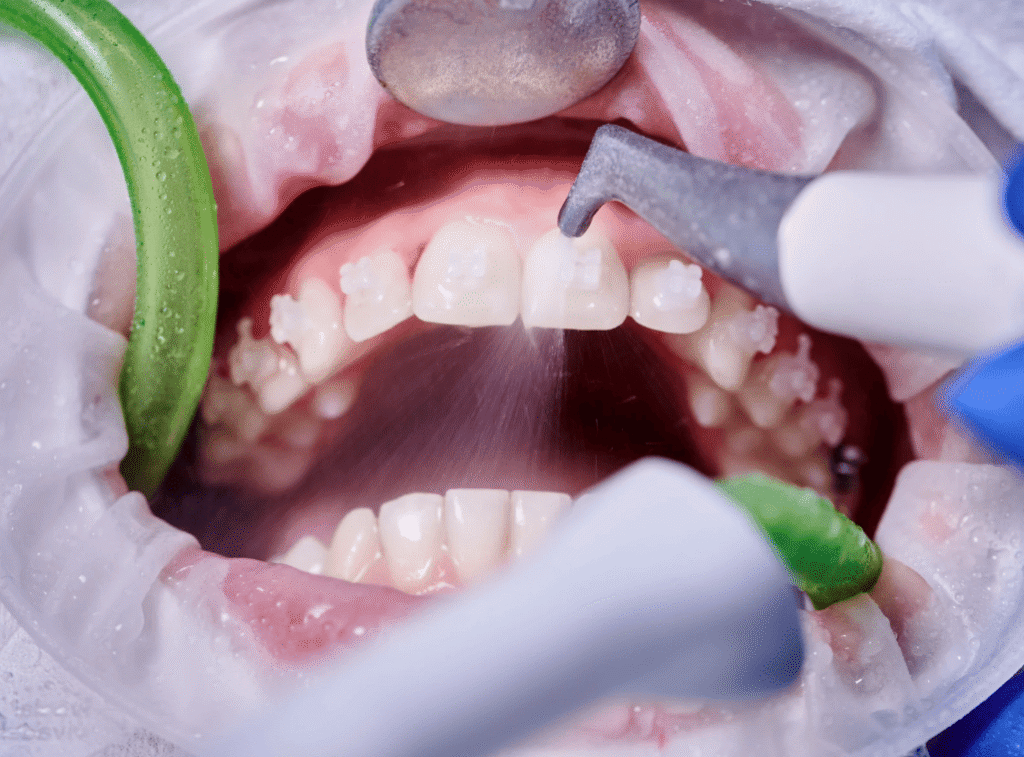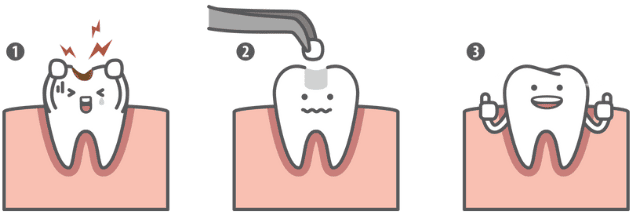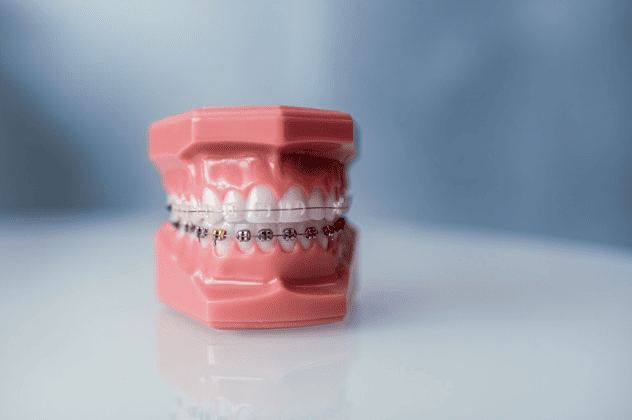
Tooth Fillings Guide: Benefits, Procedure, Materials, and Cost

What is a Tooth Filling? Why Address Damaged Teeth Promptly?
A tooth filling is a common dental procedure aimed at repairing teeth damaged by decay or injury, restoring their shape and function.
Damaged teeth can affect your appearance, lead to tooth sensitivity, make chewing difficult, and may even cause more severe oral health issues. If left untreated, damaged teeth allow bacteria to reach the tooth pulp, eventually leading to the need for more complex and costly treatments like root canal treatment or tooth extraction. Therefore, prompt tooth filling is essential for maintaining oral health, protecting tooth structure, and preventing greater health risks.

Benefits of Tooth Fillings: Why Get a Tooth Filled?
Prevent Further Tooth Decay
Untreated cavities create breeding grounds for bacteria, which can erode the tooth further and even infect the pulp. Fillings clear decay and prevent bacteria from spreading.
Restore Normal Function
Damaged teeth can impair chewing, making eating uncomfortable. Fillings restore the tooth’s function, enabling normal eating.
Reduce Sensitivity and Pain
Exposed nerves from damaged teeth can lead to sensitivity or pain. Fillings protect nerves, reducing sensitivity.
Enhance Tooth Stability
Unfilled, weakened teeth are prone to fractures. Fillings stabilize the structure and boost overall oral health.
Maintain Aesthetic Appearance
Fillings restore teeth to a natural appearance, especially important for front teeth. Modern filling materials closely match natural tooth color.

The Tooth Filling Procedure: Steps from Examination to Polishing
The specific steps in a tooth filling procedure may vary depending on the degree of damage and chosen materials, but generally include:
1. Examination and Diagnosis
Dentists assess the extent of tooth damage, often using X-rays, to decide on an appropriate treatment method.
2. Anesthesia
To minimize discomfort, local anesthesia is typically applied, especially for deep cavities, ensuring a comfortable experience.
3. Decay Removal
The dentist removes the decayed area and smooths the tooth surface to prepare for filling material placement.
4. Material Selection and Filling
Based on the patient’s needs and tooth location, a suitable filling material, such as composite resin or amalgam, is selected and placed into the cavity.
5. Shaping and Adjusting
The dentist shapes the filling to fit naturally with the bite, preventing unusual bite pressure.
6. Final Polishing
The filling is polished to create a smooth, durable surface, ensuring a comfortable bite.

Tooth Filling Materials: Pros and Cons of Each
Selecting the right filling material is crucial for durability, aesthetics, and performance. Common options include:
Composite Resin
Popular due to its close resemblance to natural teeth, composite resin suits front teeth and areas where aesthetics are important.
Amalgam (Silver)
Affordable, durable, and strong, amalgam suits back teeth or less visible areas. However, it’s less popular for front teeth due to its dark color.
Ceramic
Ceramic fillings are highly aesthetic and stain-resistant, ideal for long-term use in visible areas, though they tend to be more expensive.
Gold Alloy
Highly durable and corrosion-resistant, gold alloy is suitable for back teeth but is costly and visibly different in color.
Types of Tooth Fillings
Direct Fillings
Used for minor damage. Dentists apply the filling material directly, suitable for surface or medium-depth cavities.
Indirect Fillings
For extensive damage, indirect fillings like crowns, inlays, or onlays, made in a lab, provide stronger support for the tooth.
Deep Fillings
Needed when decay reaches close to the pulp, often requiring root canal treatment before the filling to protect against further infection.

Tooth Filling Costs: What Affects the Price?
Several factors impact the cost of tooth fillings, including:
Material Choice
Prices vary widely depending on materials; composite resin and ceramic tend to be more expensive, while amalgam is generally affordable.
Extent of Damage
The greater the damage, the more complex and costly the repair.
Dentist’s Skill and Experience
Experienced dentists may charge higher fees, but their precision and results are often superior.
Post-Filling Care Tips: How to Maintain the Filling’s Effectiveness
To ensure the longevity of your filling, consider the following care tips:
Avoid Hard or Sticky Foods
After a filling, avoid excessive chewing on hard foods or sticky items to prevent the filling from dislodging.
Maintain Good Oral Hygiene
Brush daily and use dental floss to prevent bacteria buildup that could lead to new cavities.
Regular Check-Ups
Schedule oral check-ups every 6–12 months so the dentist can monitor and adjust your fillings if necessary.
Avoid Temperature Sensitivity
Filled teeth can initially be sensitive to temperature changes, so avoid extreme temperatures in the early days post-filling.
Conclusion
Getting a tooth filled not only repairs damage but also promotes overall oral health and quality of life. Fillings effectively protect tooth structure, restore function, prevent further deterioration, and enhance daily comfort and confidence. Treating tooth issues early can lower future medical risks and costs, making tooth fillings a valuable investment in health. If you’re considering a tooth filling, consult a professional dentist for the best treatment plan to ensure long-lasting health and aesthetic benefits.
Frequently Asked Questions About Tooth Fillings
Is a tooth filling painful?
Local anaesthesia is typically used, so the procedure is pain-free. There may be mild discomfort afterward, but it subsides quickly.
What’s the difference between composite resin and amalgam?
Composite resin matches the tooth colour and is aesthetically pleasing, ideal for front teeth. Amalgam is affordable and durable, better suited for back teeth.
How long does a tooth filling take?
Depending on the damage, a filling typically takes 30 minutes to an hour per tooth.
Can I eat right after a filling?
Some materials need a few hours to harden, so follow your dentist’s advice on eating times.
How long will a filling last?
Filling longevity varies by material and care. Composite resin and amalgam last 5–10 years, while ceramic and gold alloy have longer lifespans.
Why does my tooth feel sensitive after a filling?
Sensitivity is normal and should resolve in a few days. Consult your dentist if it persists.
Can I get only part of the tooth filled?
This depends on the extent of damage. Dentists will provide personalised advice based on your needs.
Are there side effects of fillings?
Fillings rarely cause side effects, but certain materials may cause allergic reactions in some individuals. Ask your dentist for advice on the most suitable materials.
Disclaimer
This article is for informational purposes only and does not constitute professional dental advice. If you require dental treatment or related information, we recommend consulting a professional dentist registered with the Dental Council of Hong Kong to obtain advice and diagnosis tailored to your individual needs.
While we strive to provide accurate and reliable information, we do not guarantee the completeness or timeliness of the content. The information provided should not be considered a substitute for professional dental advice, diagnosis, or treatment. If you have any concerns, please consult your dentist or other qualified healthcare professional and follow their recommendations.

Bayside Dental Tung Chung – Your Trusted Dental Care!
Our expert team is here for emergency and routine care to keep your smile healthy. Call or WhatsApp us today!
- Emergency Contact: +852 2185 6550
- After Hours: +852 6071 4530
- WhatsApp: +852 5915 5118





